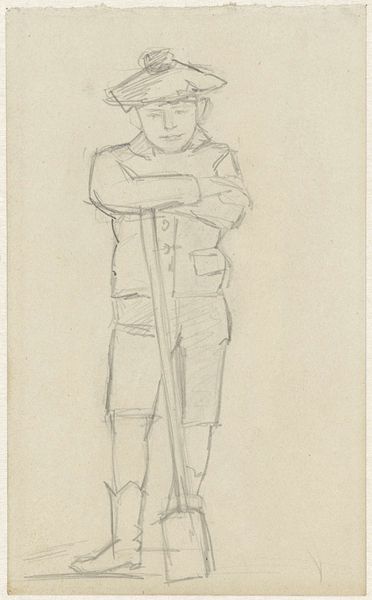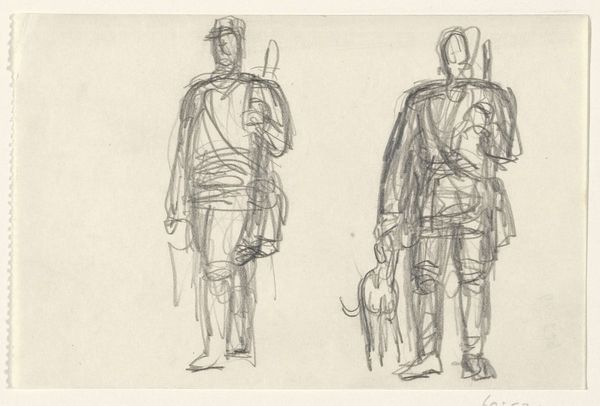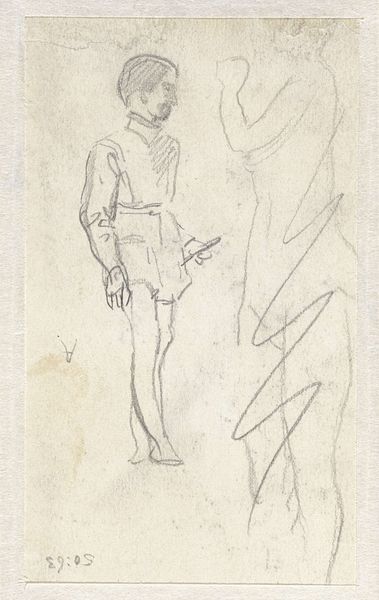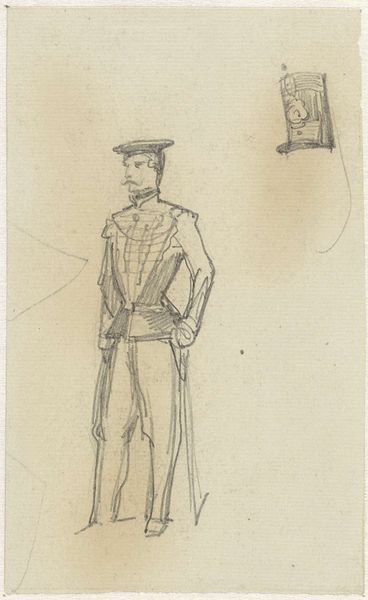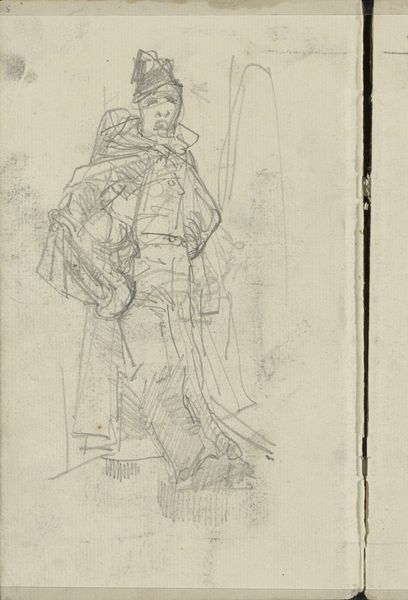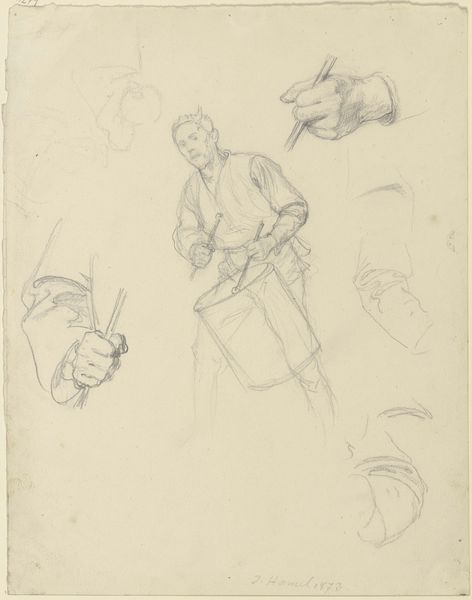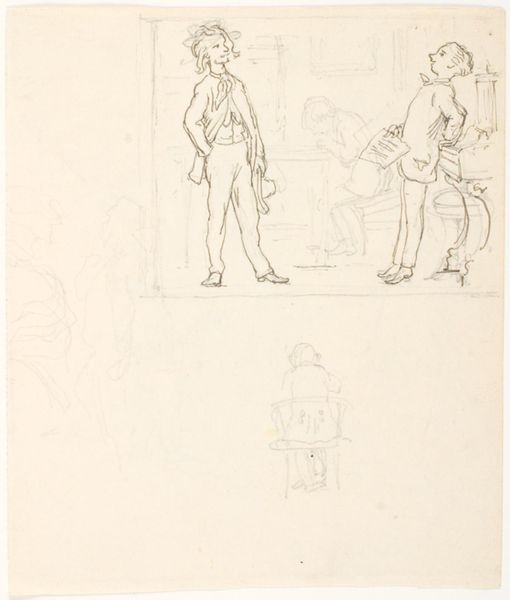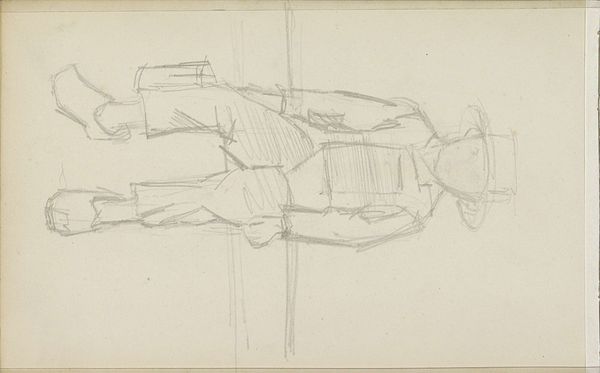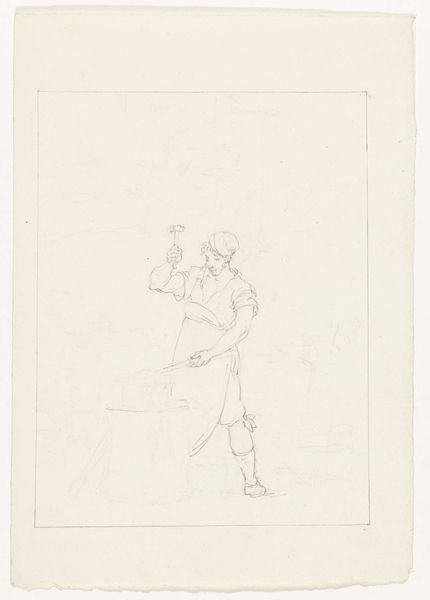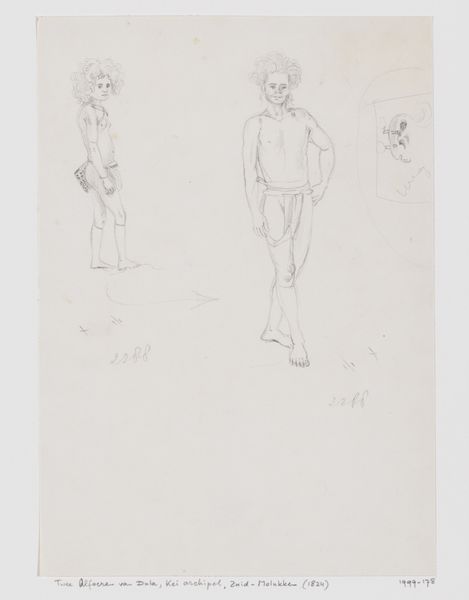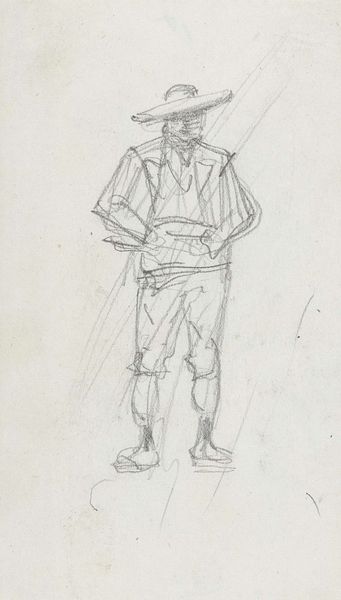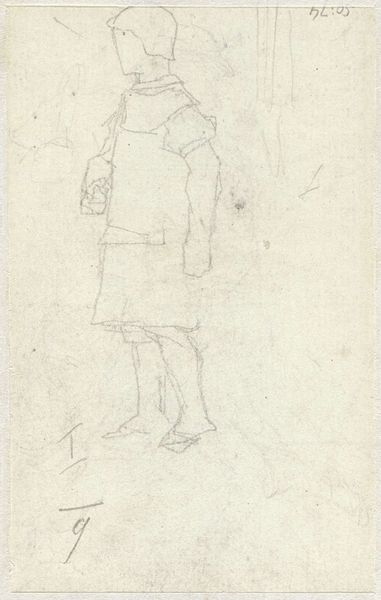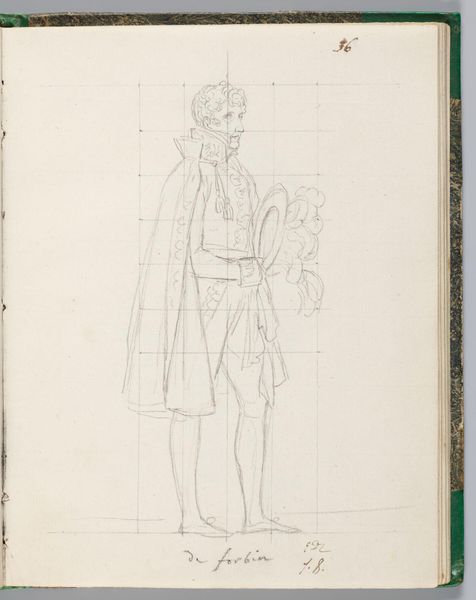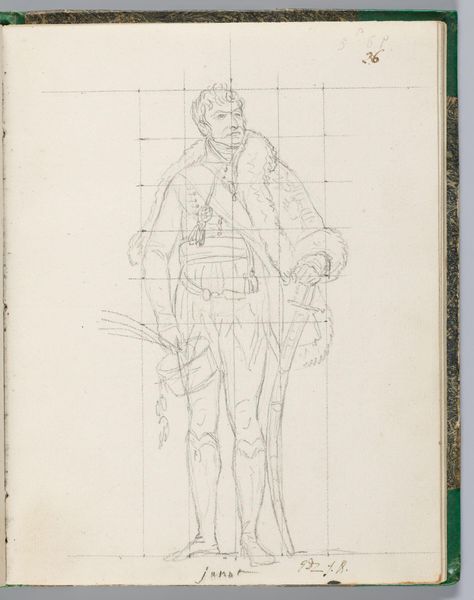
drawing, pencil
#
portrait
#
drawing
#
imaginative character sketch
#
light pencil work
#
quirky sketch
#
figuration
#
personal sketchbook
#
idea generation sketch
#
ink drawing experimentation
#
sketch
#
pencil
#
sketchbook drawing
#
storyboard and sketchbook work
#
sketchbook art
#
initial sketch
Dimensions: height 340 mm, width 245 mm
Copyright: Rijks Museum: Open Domain
Here, Ferdinand Hodler sketches two Landsknecht soldiers, their forms emerging from the grid like figures from memory. The halberd each soldier grips is more than a weapon; it symbolizes civic duty and communal defense, echoing ancient spears of authority. Consider the pose—one hand confidently on the hip, the other firmly holding the halberd. This stance, reminiscent of classical contrapposto, lends a timeless dignity to these mercenaries. We see echoes of this in Roman statues, where emperors stood with similar self-assurance, and later in Renaissance portraits of powerful men. Yet, the Landsknecht's garb is far from classical. It reflects a distinctly German martial identity, an assertion of regional pride amidst shifting political sands. The halberd itself underwent transformations, evolving from a brutal battlefield tool to a ceremonial staff, embodying both violence and order. This duality touches upon the collective subconscious, reminding us that symbols of power are never simple. These symbols are not linear, but cyclical, their meanings resurfacing and evolving across time.
Comments
No comments
Be the first to comment and join the conversation on the ultimate creative platform.
